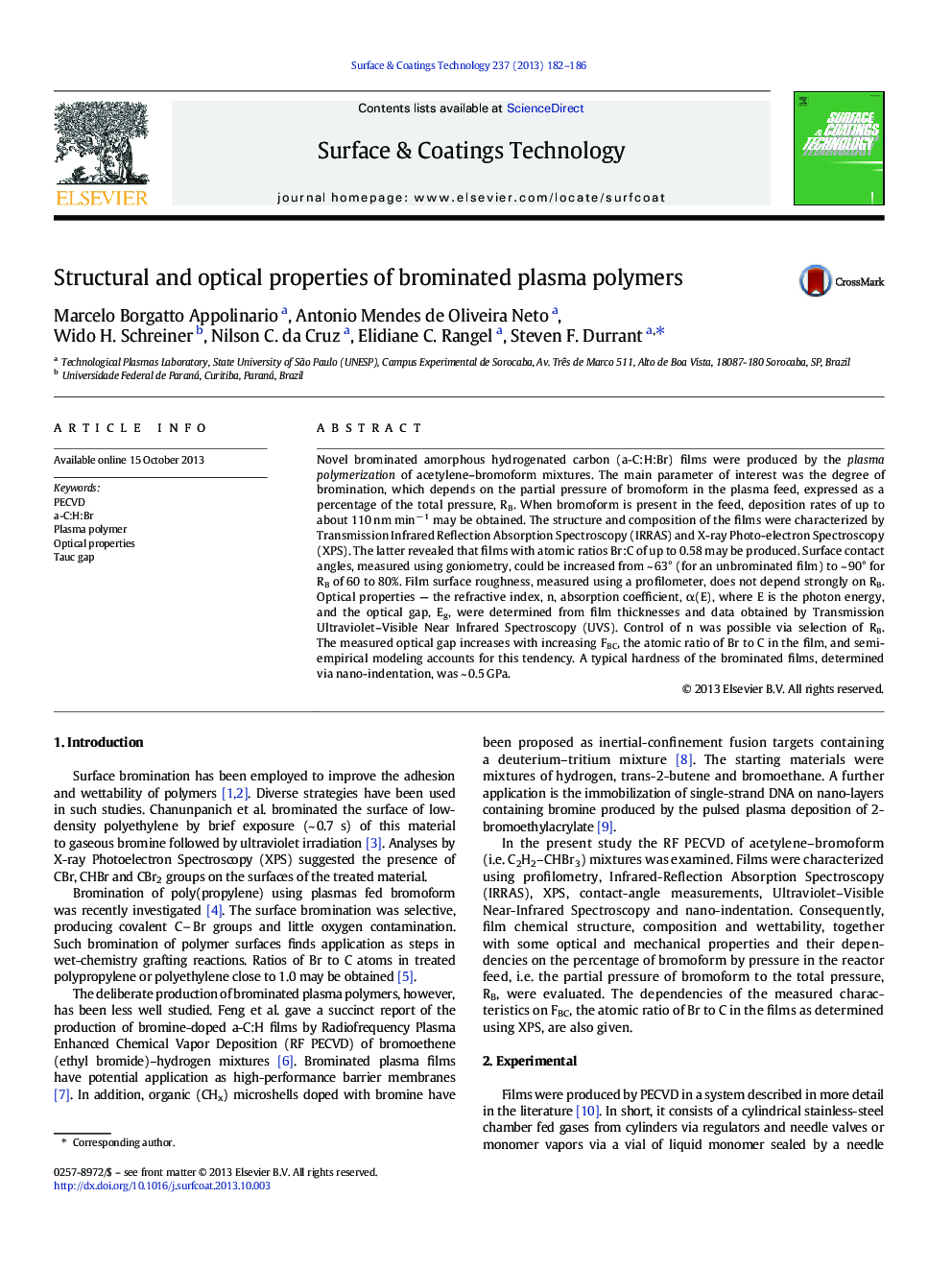| Article ID | Journal | Published Year | Pages | File Type |
|---|---|---|---|---|
| 8028659 | Surface and Coatings Technology | 2013 | 5 Pages |
Abstract
Novel brominated amorphous hydrogenated carbon (a-C:H:Br) films were produced by the plasma polymerization of acetylene-bromoform mixtures. The main parameter of interest was the degree of bromination, which depends on the partial pressure of bromoform in the plasma feed, expressed as a percentage of the total pressure, RB. When bromoform is present in the feed, deposition rates of up to about 110 nm minâ 1 may be obtained. The structure and composition of the films were characterized by Transmission Infrared Reflection Absorption Spectroscopy (IRRAS) and X-ray Photo-electron Spectroscopy (XPS). The latter revealed that films with atomic ratios Br:C of up to 0.58 may be produced. Surface contact angles, measured using goniometry, could be increased from ~ 63° (for an unbrominated film) to ~ 90° for RB of 60 to 80%. Film surface roughness, measured using a profilometer, does not depend strongly on RB. Optical properties - the refractive index, n, absorption coefficient, α(E), where E is the photon energy, and the optical gap, Eg, were determined from film thicknesses and data obtained by Transmission Ultraviolet-Visible Near Infrared Spectroscopy (UVS). Control of n was possible via selection of RB. The measured optical gap increases with increasing FBC, the atomic ratio of Br to C in the film, and semi-empirical modeling accounts for this tendency. A typical hardness of the brominated films, determined via nano-indentation, was ~ 0.5 GPa.
Related Topics
Physical Sciences and Engineering
Materials Science
Nanotechnology
Authors
Marcelo Borgatto Appolinario, Antonio Mendes de Oliveira Neto, Wido H. Schreiner, Nilson C. da Cruz, Elidiane C. Rangel, Steven F. Durrant,
